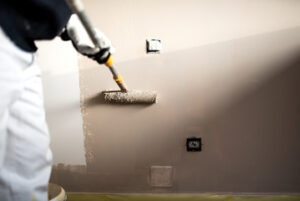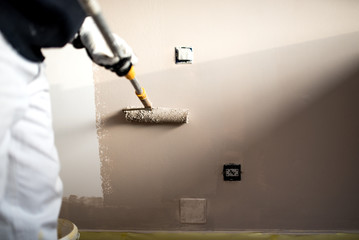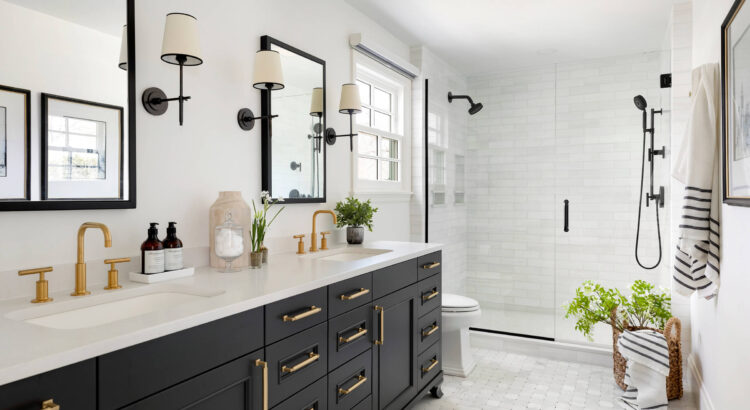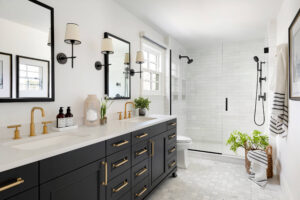Repainting your home boosts its curb appeal and enables you to upgrade its style. Professional house painters know the latest trends in paint colors and finishes to bring you a quality, immaculate finish that will last.
Reputable house painters will provide you with transparent cost breakdowns. They are also insured with liability and worker’s compensation coverage to safeguard you from unnecessary risks. Contact Modesto House Painters for professional help.
Professional house painters offer more than just steady hands and a bucket of paint. Their knowledge of various painting techniques and surface preparation, coupled with an understanding of environmental considerations and industry innovations, enables them to deliver stunning results that will stand the test of time.
Expert house painters are also trained to assess the condition of each home’s exterior and interior, identifying any potential issues that may arise during the project. They are able to make suggestions for addressing these problems effectively, minimizing costs and achieving a polished finish.
They are also well-versed in color selection and can recommend the best combinations for each client’s unique aesthetic. They understand the nuances between different paint brands and can help homeowners select options that are aesthetically pleasing, durable, and cost-efficient.
The highest-quality paints are used by house painters to achieve flawless, long-lasting results. Their advanced formulations include low or no volatile organic compounds (VOCs) and are designed to withstand the bumps and thumps of everyday life, as well as resist fading from sunlight.
Throughout the entire process, house painters respect each customer’s property. They ensure that furnishings and floors are protected from dust and splatters, and they clean up at the end of each day to minimize disruption. They strive to exceed expectations at every stage of the process, from preparing surfaces to applying the final strokes.
When hiring a house painter, always ask for proof of licensing and insurance. Licensing guarantees that the person meets industry standards and adheres to regulations, while insurance protects you as the homeowner from any damages or accidents that could occur during the project. It’s also important to look for an experienced contractor with a strong work ethic and a commitment to customer satisfaction.
Safety
Painting requires a variety of tools that can be dangerous when used incorrectly. Swinging around a paint-saturated brush without safety goggles can result in a splotch of paint in your eye, and the flammable aspect of many paint products is another risk factor that could lead to burns. Additionally, working at heights presents its own set of risks that can include falls from ladders or scaffolding that are both potentially fatal. Professional painters know how to properly handle and use all of these items safely.
Paint fumes can be especially harmful to individuals who suffer from respiratory conditions or allergies, and a lack of ventilation increases exposure risks. Using high-quality, low-VOC paints and ensuring proper ventilation in workspaces reduces the potential health hazards of paint fumes.
It is also important to protect flooring and furniture with drop cloths that are securely fastened. This minimizes the need for heavy lifting, which can lead to back injuries. Ladders should be secured and inspected to ensure they are stable before climbing, and a harness may be needed for work at heights. Professionals are aware of these and other safety precautions to protect themselves and their clients from harm.
In addition, professional house painters often use specialized cleaning and waste removal equipment to dispose of empty paint cans and other materials after each project. This is an important step in preventing the spread of hazardous materials, as well as reducing environmental impact.
The color choices that a house painter uses can have significant impacts on the look and feel of a space. They are up to date on the latest trends and styles, and can offer suggestions for colors that will complement the existing architecture and surrounding environment. They can also recommend the best paint for specific rooms, taking into account ceiling height, wall height, and available natural and artificial lighting.
Professionals are also familiar with the proper techniques for preparing surfaces, which includes patching holes and cracks, sanding, priming, and other necessary tasks. This results in a smoother finish that lasts longer and looks better than an incomplete or poorly executed DIY job. Skipping this important step can cause peeling and flaking, which will require costly repairs or rework.
Peace of Mind
Professional home painters are committed to the health and safety of all their clients. This means they use the right tools and supplies to prevent accidents, and they keep up with industry standards to ensure a quality paint job. Moreover, they follow the right practices for disposing of empty paint cans and brushes. This eliminates the risk of contaminating the environment, while also protecting homeowners from the inconvenience of tripping over old drop cloths and paint cans.
Painting is a delicate task that requires attention to detail. From sanding the walls to ensuring there are no loose particles, this work requires skills and experience that aren’t easily learned. When it comes to exterior painting, a small mistake can leave the entire house looking messy and unfinished. Professionals are trained to deliver near-perfect results and provide advice on color, texture, and finish, ensuring that the final product matches your home’s unique design and withstands harsh weather conditions.
Unscrupulous contractors often exploit unsuspecting homeowners by leveraging deceptive tactics to make more money. Here are some insights to help you identify reputable professionals and avoid scams:
Be Wary of Extremely Low Prices
Painting projects can take several days, including prep work that’s essential for the quality of the finished job. A house painter that offers a price that’s too good to be true is likely cutting corners with cheap or diluted paint. Be sure to engage in a thorough discussion about the paint brand, grade, and finish they plan to use for your project.
Secure Trust through Transparent Payment
Legitimate house painters prioritize transparency in their pricing structure, explaining the factors that influence each component of your bill. They also offer flexible financing options and only request full payment after completing the project, so you can feel comfortable making an informed decision without stress or pressure.
Address Repairs in the Contract
A clause that addresses unforeseen repair needs in the contract is a key sign of a reputable house painter. In contrast, deceptive painters will invent or exaggerate these needs to force you into paying for services you may not need.
Aesthetics
A fresh coat of paint enhances the beauty and value of a house. It elevates curb appeal, rejuvenates interiors, and offers an easy way to upgrade your home without extensive renovations. Aside from enhancing aesthetics, it also protects surfaces against weather elements and extends the lifespan of existing structures. Professional painters are well-versed in the nuances of different painting techniques and materials, and they use their knowledge to ensure a smooth and elegant finish that lasts.
They take into account the architectural nuances of your house, as well as the type of environment it’s used for. For example, kitchens for entertaining may require darker tones to hide smudges and food stains, while bedrooms for sleeping might be best served by lighter hues that brighten up the space. They are also aware of color trends in different interior design styles and can recommend the ideal colors to create a look that resonates with your personality and matches your lifestyle.
Besides utilizing high-quality materials and applying it with precision, a good house painter will also pay attention to lighting conditions when selecting the perfect shade. They understand how different light sources cast shadows and accentuate certain textures on the painted surfaces.
As part of their service, a house painter will also clean up after completing the project. This ensures that the new coat of paint is flawless and that your home looks spotless and ready to be enjoyed by your family and guests. Moreover, it saves you the stress of cleaning up after a messy project and ensures that the work area is tidy before they leave.
House painters will also come equipped with all the necessary tools for the job, so you don’t have to worry about investing in expensive equipment. This makes the whole experience easier and convenient for you. Additionally, a professional painter will be able to complete the job faster than you could on your own.
Whether you’re planning to renovate your home’s exterior or interior, hiring a professional house painter will help you get the best results in no time. With their expertise, licensure, and exemplary customer service, these professionals are sure to deliver exceptional results that exceed your expectations.








